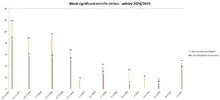How ICEYE's Polish-Finnish SAR satellites support Ukraine's defense
The Ukrainian daily
Ekonomichna Pravda (part of European Pravda ) published details obtained from the Main Intelligence Directorate of the Ukrainian Ministry of Defense about the use of Polish-Finnish SAR radar satellites of the ICEYE company.
On Tuesday, March 4, 2025, the Ukrainian daily Ekonomichna Pravda (part of European Pravda ) published details obtained from the Main Intelligence Directorate of the Ministry of Defense of Ukraine (HUR MO) about the use of Polish-Finnish ICEYE SAR radar satellites along with previously unpublished photographs of Russian facilities.
(kuva puuttuu)
Photo provided by the Main Intelligence Directorate of the Ministry of Defense of Ukraine for the exhibition of the Serhiy Prytula Foundation "National Satellite" showing Russian warships / Photos HUR MO via Ekonomiczna Pravda
Recall that on August 18, 2022, ICEYE announced the signing of a UAH 600 million contract with
the Serhiy Prytula Charitable Foundation , aimed at providing the Ukrainian government with the ability to acquire SAR satellite imagery provided by ICEYE. The funds came from collections from Ukrainian citizens. Under the agreement, one of the ICEYE satellites was placed at the disposal of the Ukrainian government for use in the region. Additionally, ICEYE provided access to its SAR satellite constellation, which allowed the Ukrainian Armed Forces to receive satellite radar imagery of operationally critical locations with a high frequency of revisits.
The first information about the effectiveness of the acquired capabilities was published by HUR MO on June 26, 2024. Therefore, on July 8 of the same year, ICEYE and the Ministry of Defense of Ukraine signed a Memorandum of Cooperation in Helsinki to
strengthen joint activities . Then, on November 11, 2024, the German group Rheinmetall AG revealed that, under an agreement with the government in Berlin, it provided Ukraine with access to the second SAR satellite, based on
cooperation with ICEYE from September of the same year.
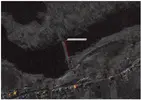
Russian pontoon-bridge crossing
In addition, Ukraine has access to the entire ICEYE constellation, consisting of dozens of models, and on March 3 this year, representatives of ICEYE, the German Embassy, HUR MO and the Serhiy Prytula Charitable Foundation presented a model of the satellite at the National Museum of History of Ukraine.
According to the latest information published in the Ukrainian media, during the operation of the first satellite purchased by the Serhiy Prytula Charitable Foundation, the Ukrainian military took 5.2 thousand images, of which 1 thousand - only in the last six months . According to the spokesman of the HUR MO Andriy Yusov, more than 40% of the photos were used in combat operations, as a result of which the enemy suffered losses amounting to billions of dollars.
Own satellite reconnaissance, and that from a company from the European Union, has become particularly important in the face of the suspension of American military aid, which includes, among other things, the exchange of intelligence data. Especially since today, on March 7, reports appeared from the industry portal Militarnyi that the American company
Maxar Technologies has also suspended its services for Ukraine.
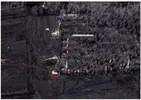
Russian positions of S-300/400 air defense systems
As the daily revealed, the head of HUR MO, Gen. Kyrylo Budanov, had already contacted ICEYE founder Rafał Modrzewski in December 2021, shortly before the full-scale invasion of Russia, with the intention of acquiring one of the SAR satellites. The company was to provide the first images just before the start of the war.
Currently, ICEYE has a representative office in Ukraine, which provides support in the field of supply and quality of satellite imagery. It also receives feedback from the Ukrainian government, which allows the company to develop technologies. Thanks to the use of satellite services by Kiev from 2022, several countries and companies have become interested in this type of capabilities for defense purposes: in May 2022, the Brazilian Ministry of Defense purchased two satellites, in 2023 ICEYE entered into cooperation with the British company BAE Systems, and in 2024 with the American Lockheed Martin and the aforementioned German group Rheinmetall AG.

Russian Air Transport Base
As mentioned, Ukraine has two SAR satellites of its own. One performs an average of 2.5 effective passes over the country's territory daily. HUR MO can use its two satellites and receive data on the area of interest at any time. However, the imagery from the remaining constellation (which has a total of 44 satellites since last year) will have to wait longer, because other clients are also waiting in line - the time difference is about six times.
The first Ukrainian satellite was launched in 2021, but its operational life is 3 years - which means that it has almost used up its capabilities, but is still operational and performing its tasks. The launch date of the satellite funded by Germany has not been disclosed, as well as the terms of the agreement regarding its use.
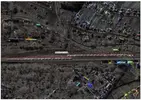
Photo of Russian trains
One example of the use of radar imagery is
the hit of the large landing ship RFS Minsk (127)/BDK-43 of Project 775 (NATO code: Ropucha) and the conventional submarine B-237 Rostov-na-Donu of Project 06363 (636.6) Warszawianka, on the night of September 12-13, 2023 in the Bay of Sevastopol in occupied Crimea (the latter
was finished off on August 3, 2024).
Currently, HUR MO uses ICEYE satellites not only to reconnaissance objects in the territory of Russia and the occupied part of Ukraine, but everywhere where Russia conducts its operations. ICEYE continues to develop its technologies. The national Ukrainian satellite is version 2.0, and currently the 3.5 generation is in use. These devices can take pictures with a resolution of 25 cm and cover an area of 100×100 km. For comparison: the first Ukrainian satellite has sensors with a resolution of 1 meter and covers an area of 15×15 km. The characteristics of the satellite donated by the Germans are not disclosed.
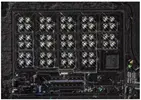
Russian oil refinery

 www.verkkouutiset.fi
www.verkkouutiset.fi


